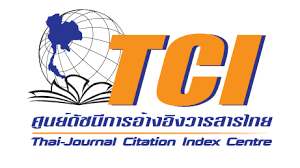NUTRITIONAL AND FATTY ACID PROFILING OF MURRAH BUFFALO, SAHIWAL AND HARIANA COW’S MILK
DOI:
https://doi.org/10.56825/bufbu.2025.4434305Keywords:
Bubalus bubalis, buffaloes, milk, Sahiwal, Hariana, Murrah, Nutritional Components, fatty acidsAbstract
Nutritional and fatty acid profiling of Murrah Buffalo, Sahiwal and Hariana Cow’s milk was conducted at DUVASU, an instructional livestock farm complex. In which milk samples from ten animals of each Hariana and Sahiwal cows and Murrah buffalo were collected at monthly interval. These samples were then separately analyzed for nutritional and fatty acid components. On comparison with Hariana and Sahiwal, Sahiwal was showing higher fat and casein components than Hariana. Murrah buffalo milk was having greater quantity of fat, casein, lactalbumin, total solids, SNF and lactose as compared to cow milk. Major Fatty acids recorded were butyric, Caproic, capric, lauric, Myristic, palmitic, stearic, oleic, linoleic, linolenic etc. Oleic acid was recorded 24.63% in Sahiwal, 23.24% in Hariana and 30.58% in Murrah. Linolenic acid was higher in buffalo than cow milk. Lauric and Myristic fatty acids were less in summer while Palmitic was higher in summer. Stearic acid varies throughout the year. CLA was recorded 0.34 g/100 g in buffalo milk while Sahiwal milk showed 0.62 g/100 g and Hariana 0.51 g/100 g.
Downloads
Metrics
References
Ahmad, S., F.M. Anjum, N. Huma, A. Sameen and T. Zahoor. 2013. Composition and physico-chemical characteristics of buffalo milk with particular emphasis on lipids, proteins, minerals, enzymes and vitamins. J. Anim. Plant Sci., 23(Suppl. 1): 62-74.
Barry, H. Gump. 2014. Titrable Acidityon, Available on: https://www.umpqua.edu› 2014-ts-3-ph-ta-n2
Bianca, W. 1962. Relative importance of dry- and wet-bulb temperatures in causing heat stress in cattle. Nature, 195: 251-252
Bradley, R.L. 2002. Dairy foods. In Horwitz, W. (ed.) Official Methods of Analysis of the AOAC International, 17th ed. Association of Official Analytical Chemists International, Gaithersburg, USA. p. 1-88.
Bradley, R.L., E. Arnold, D.M. Barbano, R.G. Semerad, D.E. Smith and B.K. Vines. 1992. Chemical and physical methods. In Marshall, R.T. (ed.) Standard Methods for the Examination of Dairy Products, 16th ed., American Public Health Association, Washington D.C., USA. p. 433-531.
Folch, J., M. Lees and G.H. Sloane-Stanley. 1957. A simple method for the isolation and purification of total lipides from animal tissues, J. Biol. Chem., 226(1): 497-509. DOI: 10.1016/S0021-9258(18)64849-5
Han, X., F.L. Lee, L. Zhang and M.R. Guo. 2012. Chemical composition of water buffalo milk and its low-fat symbiotic yogurt development. Functional Foods in Health and Disease, 2(4): 86-106. DOI: 10.31989/ffhd.v2i4.96
Heck, J.M.L., H.J.F. Van Valenberg, H. Bovenhuis, J. Dijkstra and T.C.M. Van Hooijdonk. 2012. Characterization of milk fatty acids based on genetic and herd parameters. J. Dairy Res., 79(1): 39-46. DOI: 10.1017/S0022029911000641
Islam, M.A., M.K. Alam, M.N. Islam, M.A.S. Khan, D. Ekeberg, E.O. Rukke and G.E. Vegarud. 2014. Principal milk components in buffalo, holstein cross, indigenous cattle and red chittagong cattle from Bangladesh. Asian Austral. J. Anim., 27(6): 886-897. DOI: 10.5713/ajas.2013.13586
Khanal, R.C. and K.C. Olson. 2004. Factors Affecting Conjugated Linoleic Acid (CLA) Content in Milk, Meat, and Egg: A Review. Asian Network for Scientific Information, Pakistan.
Larsen, N., B.B. Werner, F.K. Vogensen and L. Jespersen. 2015. Effect of dissolved oxygen on redox potential and milk acidification by lactic acid bacteria isolated from a DL-starter culture. J. Dairy Sci., 95(3): 1640-1651. DOI: 10.3168/jds.2014-8971
Michele, F., G.T. Kemerich, B.L. Machado, J.M. Maciel, C. Fernanda and V. de Souza. 2019. Effects of cow, goat, and buffalo milk on the characteristics of cream cheese with whey retention. Food Sci. Technol., 39(1): 1231-1245. DOI: 10.1590/fst.39317
Mahoney, A.M., J.T. Dalby and M.C. King. 1998. Cognitive failures and stress. Psycho. Rep., 82(3, Pt 2): 1432-1434. DOI: 10.2466/PR0.82.3.1432-1434
Markiewicz-Kęszycka, M., G. Czyżak-Runowska, L. Paulina and W. Jacek. 2013. Fatty acid profile of milk - A review. B. Vet. I. Pulawy, 57(2): 135-139. DOI: 10.2478/bvip-2013-0026
Mihaiu, R., M. Mihaiu, A. Pintea, C. Bele, A. Lapusan, S.D. Dan, C. Taulescu and A. Ciupa. 2010. Comparative study on the fat acids profile from buffalo milk as quality and traceability markers. Bulletin of University of Agricultural Sciences and Veterinary Medicine, 67(2): 161-165. DOI: 10.15835/buasvmcn-vm:67:2:6015
Singh, H. 2004. Heat stability of milk. Int. J. Dairy Technol., 57(2-3): 111-119. DOI: 10.1111/j.1471-0307.2004.00143.x
Sri, M., Yuherman, Jaswandi and E. Purwati. 2018. Selection of buffalo milk lactic acid bacteria with probiotic potential. Asian Journal of Pharmaceutical and Clinical Research, 11(6): 186-189. DOI: 10.22159/ajpcr.2018.v11i6.24809
Snedecor, G.W. and W.G. Cochran. 1994. Analysis of variance. In Statistical Methods, 9th ed. Iowa State University Press, Iowa, USA.
Tonhati, H, A.L. Lima, D.P. Lanna, G.M. de Camargo, F. Baldi, L.G. de Albuquerque and J.M. Montrezor.2011. Milk fatty acid characterization and genetic parameter estimates for milk conjugated linoleic acid in buffaloes. J. Dairy Res., 4: 1-6. DOI: 10.1017/S0022029911000045
Varrichio, M.L., A. Di Francia, F. Masucci, R. Romano and V. Proto. 2007. Fatty acid composition of Mediterranean buffalo milk fat. Ital. J. Anim. Sci., 6(Suppl. 1): 509-511. DOI: 10.4081/ijas.2007.1s.509
Wolff, R.L. 1995. Content and distribution of trans - 18:1 acids in ruminant milk and meat fats. Their importance in European diets and their effect on human milk. J. Am. Oil Chem. Soc., 72: 259-272.
Xue, H., F.L. Lee, L. Zhang and M.R. Guo. 2012. Chemical composition of water buffalo milk and its low-fat symbioticyogurt development. Functional Foods in Health and Disease, 2(4): 86-106. DOI: 10.31989/ffhd.v2i4.96

Downloads
Published
How to Cite
Issue
Section
License
Copyright (c) 2025 Buffalo Bulletin

This work is licensed under a Creative Commons Attribution-NonCommercial-NoDerivatives 4.0 International License.








.png)








